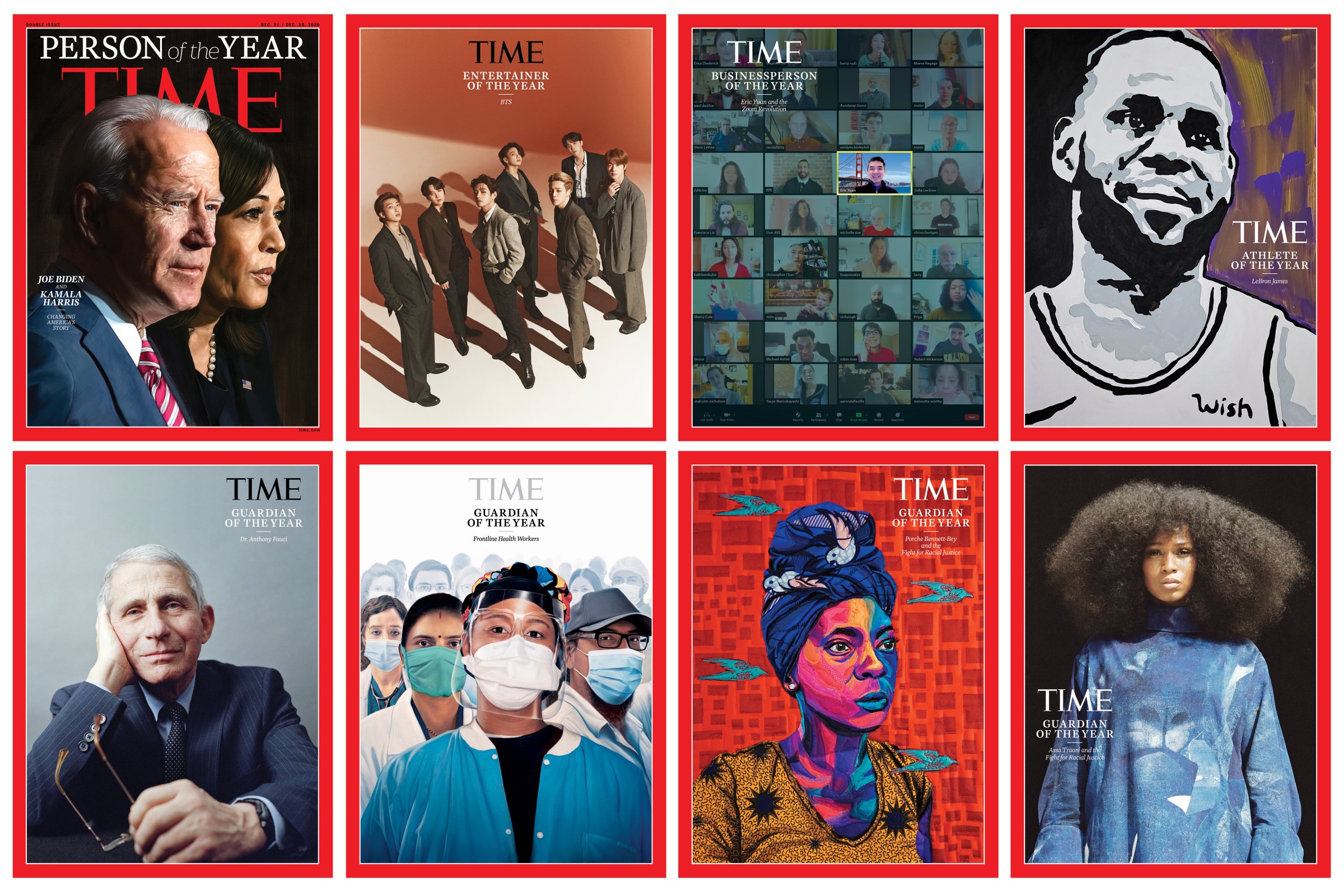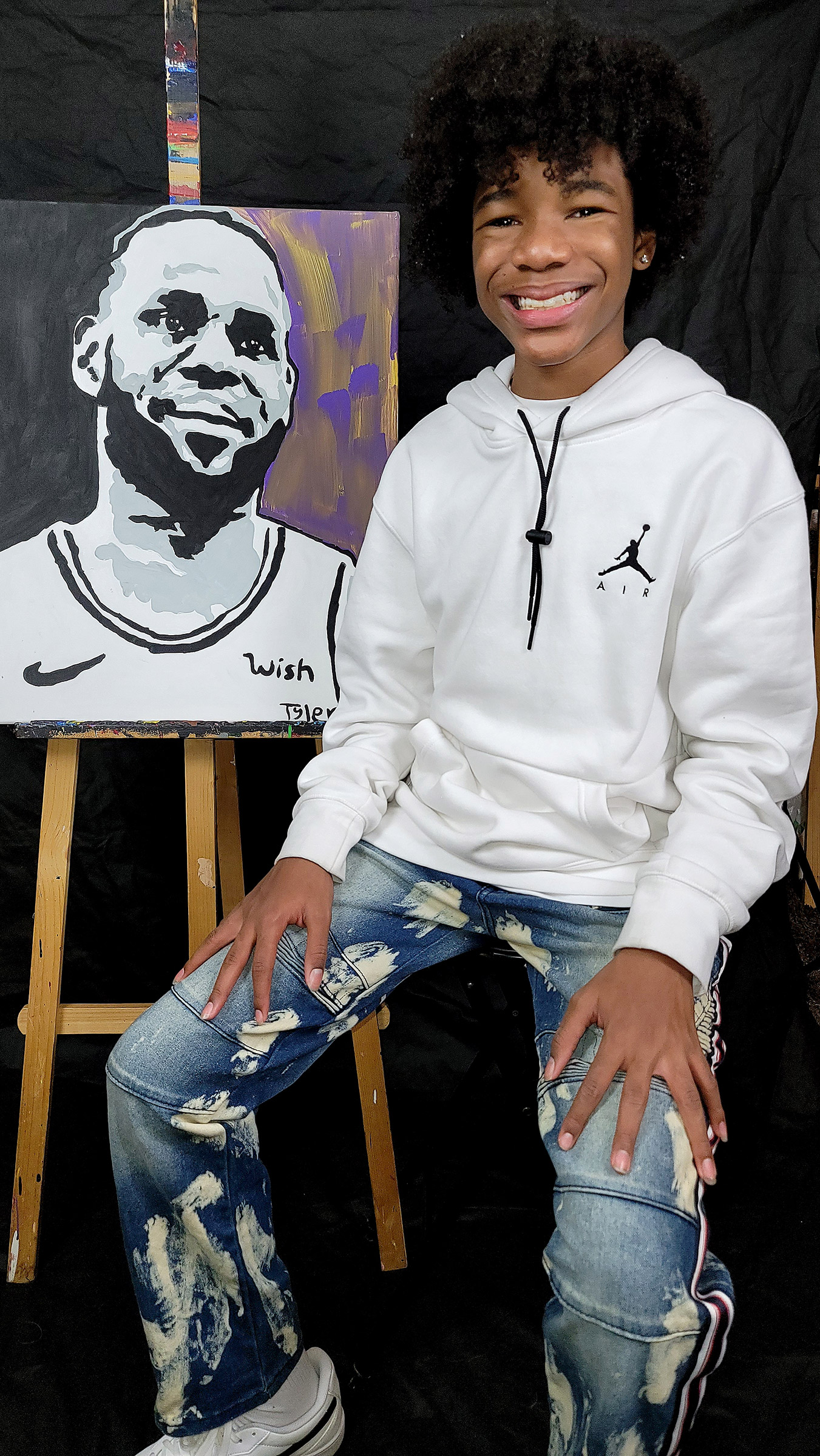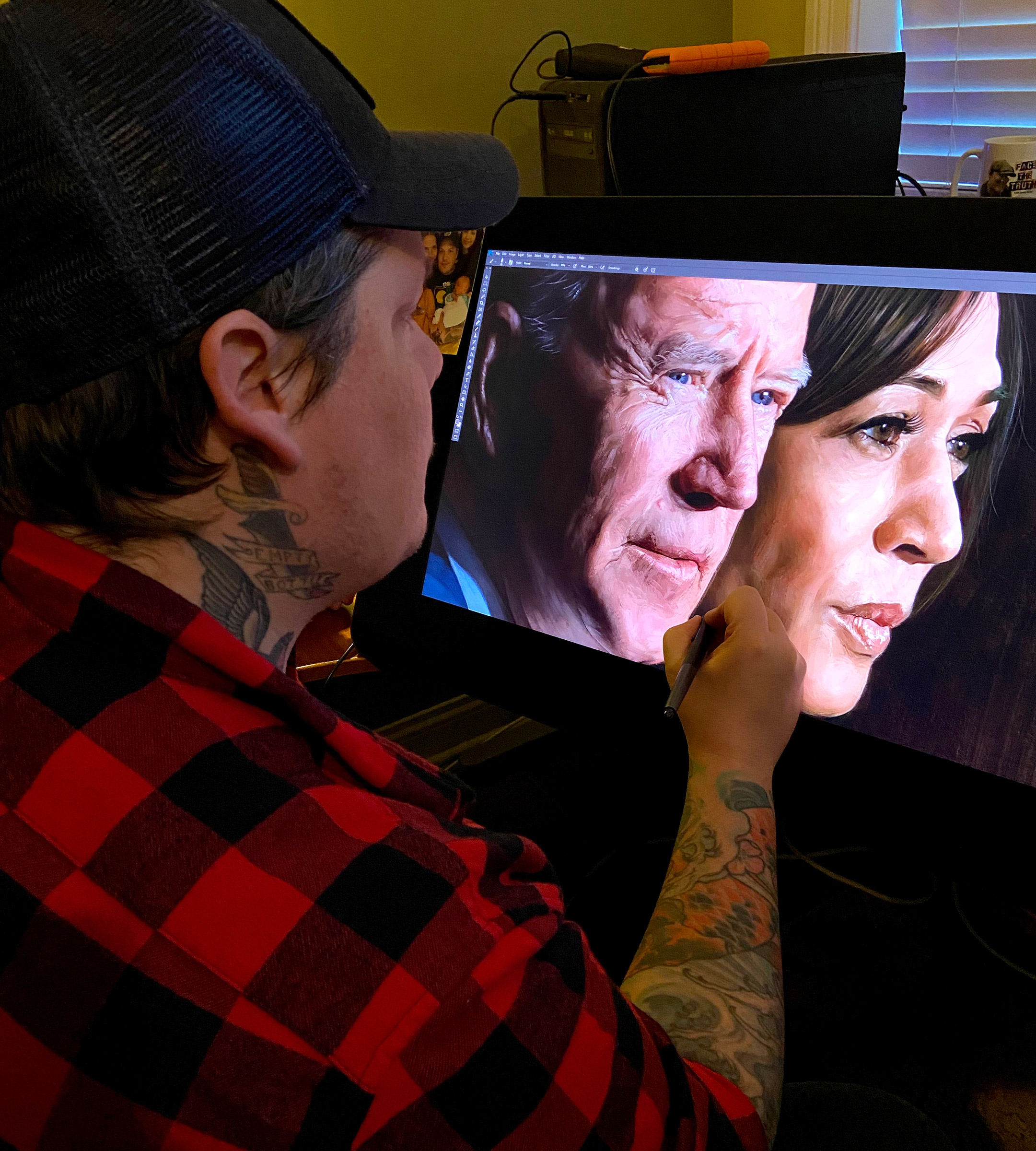
In the fall of any normal year, we pack a conference room at TIME’s headquarters in New York City with reporters, producers and editors to debate who should be selected as Person of the Year, one of the most-watched franchises in journalism, one that has endured world wars and depressions, periods of conflict and years of peace—and now a global pandemic.
This year, we held the meeting from our homes in cities around the world. Like so many of you, we’ve been working remotely and collaborating virtually. We met one another’s families and pets as they popped into the camera; shared joys, concerns and anxieties; cared for and sometimes lost loved ones to this terrible disease.
Some things did stay the same. As we’ve done for the past 93 years, different teams of journalists were launched on parallel projects for Person of the Year, without knowing who or what the ultimate choice would be. This year—as in 2016, when Donald Trump became Person of the Year following his victory—offered the additional dimension of a U.S. presidential election concluding around the time we normally start to lock in decisions.
Collaboration is a hallmark of our team, and it is not overstatement to say that nearly everyone at TIME touched this project. The many pieces were overseen by executive editor Ben Goldberger, joined by an editorial committee that included Naina Bajekal, Lori Fradkin, Mahita Gajanan and Victor Williams. They kept everything together at a time when we were all kept apart. “There was a special resonance to this year’s project,” says Ben, “because we were living so many of these stories as we were telling them.”
As the world transformed in 2020, so did we. One of the great privileges of working here is the opportunity to be in conversation with TIME’s history—and to build on it. As the nation celebrated the 100th anniversary of the 19th Amendment, we introduced Women of the Year, a multimedia effort recognizing a century’s worth of women who belong among Person of the Year’s historic company. We also introduced our first Kid of the Year, working with our colleagues at TIME for Kids and with Nickelodeon to spotlight remarkable children across the U.S. One of those kids, 14-year-old artist Tyler Gordon, painted the portrait of LeBron James, TIME’s 2020 Athlete of the Year, on one of the covers of this issue.

In our second year after becoming an independent company, under the ownership of Marc and Lynne Benioff, we found new ways to connect with our audiences, such as our TIME100 Talks virtual events, and new technologies like Zoom, created by the 2020 Businessperson of the Year Eric Yuan, that enabled our work. We launched a TIME for Kids digital-subscription product; prime-time broadcast specials on ABC, Nickelodeon/CBS and NBC; and a variety of new newsletters, which together now reach more than 1.4 million subscribers. We also built new offerings in health and personal finance.
Early in the year, we brought Martin Luther King Jr. into virtual reality. That project, a first-of-its-kind re-creation of the March on Washington, served as a reminder of King’s unfinished work. The urgency of that work became even clearer this summer, as calls to end systemic racism reverberated around the world. This issue tells that story, in part, through our 2020 Guardians of the Year: racial-justice organizers like Assa Traoré in Paris and Porche Bennett-Bey in Kenosha, Wis.
Like many companies, TIME has been grappling with what equality means in our own workplace. We’ve committed to our audiences and to our team to do more to amplify underrepresented voices in our coverage and to support Black employees and staff members from marginalized groups in our newsroom and our company. We are working to make TIME an equitable, diverse and inclusive organization. As I wrote earlier this year, we know that will make TIME stronger.
On Dec. 7, I traveled with Washington bureau chief Massimo Calabresi, senior correspondent Charlotte Alter, photo director Katherine Pomerantz, executive producer Jonathan Woods and others to meet with President-elect Joe Biden and Vice President–elect Kamala Harris at the Queen Theater in Wilmington, Del. We talked with them about the challenges of conducting a transition in the pandemic and about those ahead. From our distance of 16 ft., I asked Biden how much remote work and other aspects of our pandemic lives would continue once it was over. “I think we’re going to get back to the ability to embrace one another,” he said. “I think that’s important.” At one point, Biden stopped the proceedings to do that virtually by FaceTiming with the parents of our photographer Camila Falquez.

The selection of Person of the Year is rarely easy, and this year was far more difficult than most. Predictions can make fools of all of us, but it seems safe to say that historians will look at 2020 as a crucial turning point on many fronts. In Joe Biden and Kamala Harris, we have two individuals whose election mirrored and moved the major stories of this year and whose fates will shape the nation’s role in the world and the future of the American experiment.
This article is part of TIME’s 2020 Person of the Year issue. Read more and sign up for the Inside TIME newsletter to be among the first to see our cover every week.
More Must-Reads from TIME
- Where Trump 2.0 Will Differ From 1.0
- How Elon Musk Became a Kingmaker
- The Power—And Limits—of Peer Support
- The 100 Must-Read Books of 2024
- Column: If Optimism Feels Ridiculous Now, Try Hope
- The Future of Climate Action Is Trade Policy
- FX’s Say Nothing Is the Must-Watch Political Thriller of 2024
- Merle Bombardieri Is Helping People Make the Baby Decision
Contact us at letters@time.com